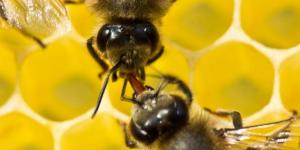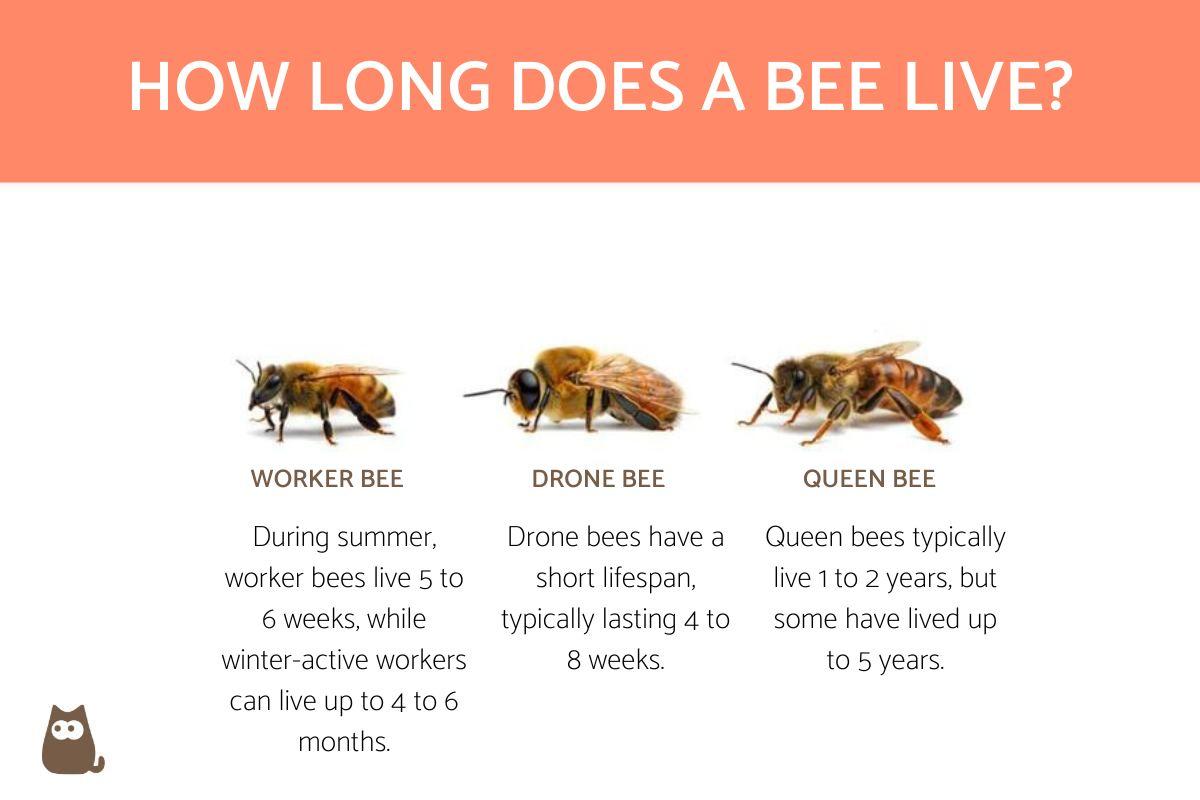How Long Does a Bee Live?


The bee stands as one of nature's most invaluable and diligent creatures. Despite their small size, these remarkable insects wield a significant influence on ecosystems, agriculture, and the delicate equilibrium of life itself. Beyond their individual significance, bees exhibit an intricate social structure by residing in complex colonies. Within these colonies, the division of labor is a meticulously orchestrated affair. Not only that, but this intricate division directly influences the lifespan of each bee.
The following AnimalWised article explores how long do bees live and how their lifespan is influenced by their roles within colonies.
How are bees classified?
Bees can be classified into different groups by considering various aspects of their biology, behavior, and traits. One common method of categorization is based on their reproductive behavior, which broadly divides them into two primary categories:
- Eusocial bees: these bees, like honey bees, live in colonies with specialized roles – queen bees for reproduction, worker bees for tasks, and male drones for mating.
- Solitary bees: these bees live independently, with each female building her nest, laying eggs, and providing provisions for her offspring without a colony structure or specialized roles.
In this article, we will categorize bees and explore their lifespan based on the classification of their reproductive behavior.
Explore further insights into bee communication by delving into this other article.
How long does a queen bee live?
Queen bees take the lead in their colonies as the dominant females. They're usually larger than worker bees and male drones, making them easy to spot. A young queen bee leaves the nest and releases pheromones that attract male drones for mating. During these mating flights, she mates with multiple males. Afterward, the queen doesn't mate again, as she stores and uses the collected sperm for her entire reproductive life.
Queen bees, being the only fertile females, play a crucial role as primary reproducers. Their behavior shapes the colony dynamics and includes a protective aspect. The bulk of their time is spent on laying eggs, and remarkably, a single queen bee can lay up to around 200,000 eggs in her lifetime.
Beyond just quantity, the queen's influence extends to the kind of offspring produced. Unfertilized eggs develop into male drones, while fertilized eggs become female workers or potential queen bees. The specific diet provided to the developing larvae determines this developmental outcome.
The journey of a queen bee from egg to adulthood spans approximately 16 days. Following this maturation, she begins her role as an egg-layer after a short delay of about a week.
Regarding lifespan, queen bees live, on average, for 1 to 2 years. However, there are instances where some queens have remarkably lived up to 5 years.
How long does a worker bee live?
Worker bees form an exclusively female caste, akin to queens, comprising essential members within the colony. Their roles are multifaceted, encompassing tasks vital for the nest's sustenance.
This division of labor is meticulous, including responsibilities such as construction, pollen and nectar collection, honey production, tending to eggs during incubation, nurturing larvae, supporting the queen, and safeguarding the hive.
In the summertime, worker bees maintain an active lifespan of approximately 5 to 6 weeks. However, those active during winter extend their lives to endure for about 4 to 6 months. It's a rarity for a worker bee to surpass the one-year mark.
Remarkably, over its lifetime, a worker bee covers a remarkable distance of approximately 800 kilometers in flight.
Be sure not to overlook this additional article that delves into the diverse array of bee nests and their various types.

How long does a drone bee live?
Drone bees, the male counterparts within the colony, primarily fulfill the role of mating with queens to facilitate the fertilization of eggs.
Although drones neither forage nor possess distinct tasks within the nest, they do contribute in specific scenarios. For instance, during considerable temperature fluctuations, they can aid workers in temperature regulation. Notably, drones rely on workers for sustenance, unable to gather food independently.
The developmental journey of drones spans around 24 days until they emerge as adults. After this phase, they depart the nest and await virgin queens for mating.
An intriguing aspect is that once a drone mates with a queen, it experiences a swift demise. Consequently, the lifespan of a drone bee is relatively brief, ranging from 4 to 8 weeks at most. This brevity positions them as the bees with the shortest lifespan within the colony.
How long does a solitary bee live?
The lifespan of solitary bees varies depending on the species, environmental conditions, and their specific role within their lifecycle. Generally, solitary bees have shorter lifespans compared to social bees like honey bees or bumblebees.
On average, the lifespan of a solitary bee can range from a few weeks to a few months. Some solitary bee species may only live for a few weeks as adults, while others can survive for several months.
On average, the lifespan of a solitary bee can range from a few weeks to a few months. For instance, the Osmia species, commonly known as mason bees, typically live as adults for about 6-8 weeks.
Leafcutter bees, belonging to the Megachile genus, can have a lifespan of around 4-8 weeks as adults. Some solitary bee species that emerge later in the year may have longer lifespans, surviving through the colder months before their next generation emerges.
It's important to note that solitary bees focus their energy on their reproductive efforts and often have a shorter adult lifespan compared to social bees, which benefit from the division of labor and support within a colony.
How long does a bee live without eating?
Bees, as flying insects, possess a notable energy requirement due to the energy-intensive nature of flight. To meet this demand, bees rely on a diet comprising pollen, nectar from flowers, honey, and the jelly they produce. These food sources are abundant in sugars, supplying them with ample energy.
Consequently, bees cannot sustain themselves for extended periods without nourishment. Their vitality diminishes rapidly, particularly among worker bees engaged in external tasks. A bee's ability to endure without food is limited to approximately a day. Beyond this threshold, its demise is virtually assured. This underscores the essential connection between their feeding habits and their survival.
For a comprehensive understanding of bees' dietary habits, don't miss out on our article focused specifically on what honey bees eat.
If you want to read similar articles to How Long Does a Bee Live?, we recommend you visit our Facts about the animal kingdom category.
- Britannica, T. Editors of Encyclopaedia. (2023). Bee . Encyclopedia Britannica. Available at: https://www.britannica.com/animal/bee
- Hammond, G. and M. Blankenship. (2009). " Apis mellifera ". Animal Diversity Web. Available at: https://animaldiversity.org/accounts/Apis_mellifera/
- Skinner, J. (2023). How long do worker honey bees live? . Available at: https://bee-health.extension.org/how-long-do-worker-honey-bees-live/






